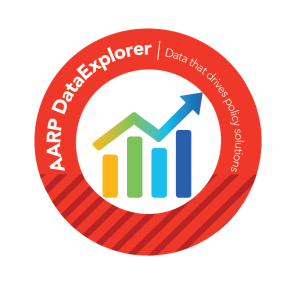AARP Hearing Center
At Your Fingertips: A Trove of Data on Boomers and Americans 50-Plus

We are a data-driven society. We need data to address the challenges and opportunities facing the 50-plus population. I am pleased to announce that today AARP’s Public Policy Institute launched the AARP DataExplorer , a free website tool that provides a rich collection of data on issues relevant to people age 50 and older.
The 50-plus group accounts for a third of the United States’ population, with about 110 million people. People in the baby boom generation make up 80 million of this 110 million, the youngest of whom turned 50 last year. The boomers are a predominant demographic, and their actions and decisions have a significant impact on our economy. Not surprisingly, both the private sector and state and federal governments are paying close attention to the issues facing people in this age group.
Yet, up to now, it has been difficult to find a single source that brings together data on a range of topics that affect the 50-plus population, such as health, income and retirement security, housing, and long-term services and supports. AARP’s DataExplorer fills that gap by providing both state and national data.
As boomers age, they’ll be seeking accessible housing options, communities that accommodate healthy aging, and services and supports that enable them to live in their homes for as long as they choose. Their influence also extends to public programs. As more of them retire, more will begin collecting Social Security benefits and enrolling in Medicare. AARP’s DataExplorer houses data on these topics and more. Policymakers, researchers and the public can tap this information to identify state and national trends, create visuals for presentations, or develop innovative policy solutions.
The 50-plus is not a homogeneous group; the issues facing people in this age range vary by race and ethnicity, income, and even geographic regions (to name a few). AARP’s DataExplorer allows users to sort the data by state, demographic and economic indicators to identify specific subpopulations. The tool also allows users to refine searches to obtain a more detailed age breakdown of the 50-plus population.
I welcome you to check out AARP’s DataExplorer at www.aarp.org/dataexplorer and let me know what you think!

Lina Walker is vice president at the AARP Public Policy Institute, working on health care issues.































































